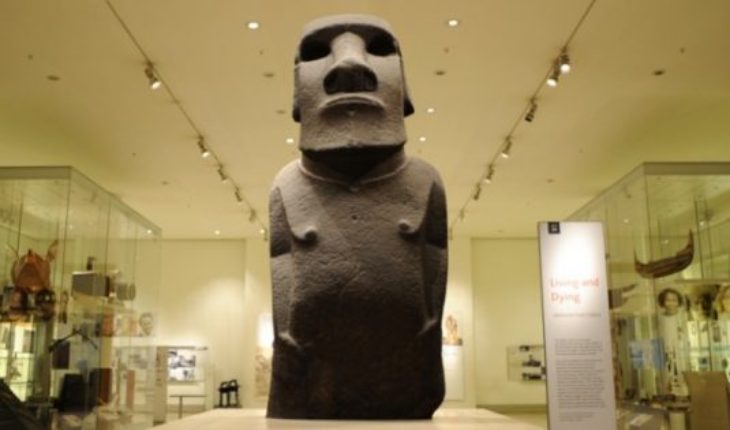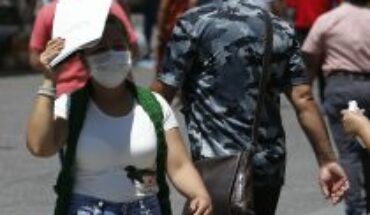makes 150 “the Moai Hoa Hakananai years ‘ to it was removed from its place of origin by sailors from English to be carried as a gift to the monarchy British and, later, donated to the British Museum for his museology and the consequent strengthening of its collection on” other”cultures and histories. Almost two centuries after this event is developing one more forceful application of “return” a patrimonial good processes, or at least more media, which has record of part of our country. This process has been led by community Rapa Nui and the State of Chile against one of the colonial powers in the 19th and 20th century. The case of the Moai saved the distinction of being the only Latin American which has been formalized and institutionalized in this way seven applications for refund of heritage objects that are displayed in this museum.
They are already several months in which this subject has been covered by means of national and international, raising even campaigns on social networks – #quevuelvaelmoai – promoting the restitution of the Moai to its place of origin. Media such as the New York Times have also dedicated some of his publications to this case, pointing out that throughout the 20th century the museums in Europe have not been outside manifestations of different Nations, many of them African and Asian, so they returned to them objects that belong to them and which were obtained in the framework of questioned legitimacy processes, such as looting or extractions, and which are displayed in these spaces cultural as part of their collections. Clear this, according to the US daily, that there are few favorable results to those requirements restorative, denial that is understood in part because these objects are the main attraction for tourists. It is the case of the Moai Hoa Hakananai’ in the British Museum, which annually gets about seven million visits.
While, as noted above, have been few cases in which assets have been returned, the process is less significant nonetheless in that emerges in the communities intend to vindicate those relevant material losses from the identity perspective and face the possibility of claiming it questionable that is that their goods are exposed in a place to which do not belong or represent and, therefore, dispute the meaning of the deterritorialized display.
Whereas this framework of deterritorialization of the patrimonial good and in a context of higher margin of autonomy and participation in processes of patrimonialization by communities is that the Rapa Nui claim has had such a degree of legitimacy, all time that the heritage already not is only understood as a good or material trace, but as the social process that gives meaning and value to an object in question from a symbolic perspective. Thus, the fact that a piece of high value identity as the Moai is exhibited in a foreign Museum and have a patrimonial character, but, at the same time, that such a process that “developed” in heritage is has originated it through a fact cuest results at least dichotomous Co,Ltd.we as their extraction and subsequent musealization thousands of kilometers away from their land, without the participation of the community to which belonged (and belongs) and away completely of what justified its origin: the spirituality of Rapa Nui.
For its part the British Museum offered to donate to the island a replica of Hoa Hakananai’ to. This opens the possibility to reflect on the values of Authenticity on which rests the equity dimension, as if not a value is not the British Museum which stays with the replica and the original return to the place from where should not exit?. Why – if one of the justifications for not making returns of some of the pieces is that by showcasing them, stories from other cultures – are evident would the replica not enough? This choice what really is valued?
Despite this, the case of the Moai displays questioning the ways in which museums have formed their collections. It is not unknown to some of the most renowned museums in the world have been built on the basis of valuable objects belonging to different communities and cultures through the plundering. Many of those amazing collections have been constituted on the basis of violent events such as looting, robberies, exchanges in contexts of high vulnerability of a group above another, colonialism and imperialism, which allows to understand and justify the emergence of this type of claims of a patrimonial nature today.
Independent of the result obtained from the negotiations with the British Museum, which would be beneficial to Rapa Nui, not must to reducing this type of process in case of not having the expected results, since all forms invites us to question the character of our heritage and the role it has for communities. In this way the questioning applies with respect to the origin of our museums and collections, reflections fostering such as whether these really are spaces that represent us all or only a few, even though they pride themselves on high degrees of representativeness.
However, the Moai Hoa Hakananai’a and the island community, represented by its Council of elders, gives account museums and heritage are dynamic and attend permanent transformations which must also consider the transformation of societies. Every time we are more who can question, challenge and transform our heritage and our museums. Here is one of the large meanings of this claim to Rapa Nui.
PIA Acevedo. DRA (c) in architecture and urban studies, Pontifical Catholic University of Chile.
Poured in this op-ed content is the sole responsibility of the author and do not necessarily reflect the editorial line nor the counter position.





